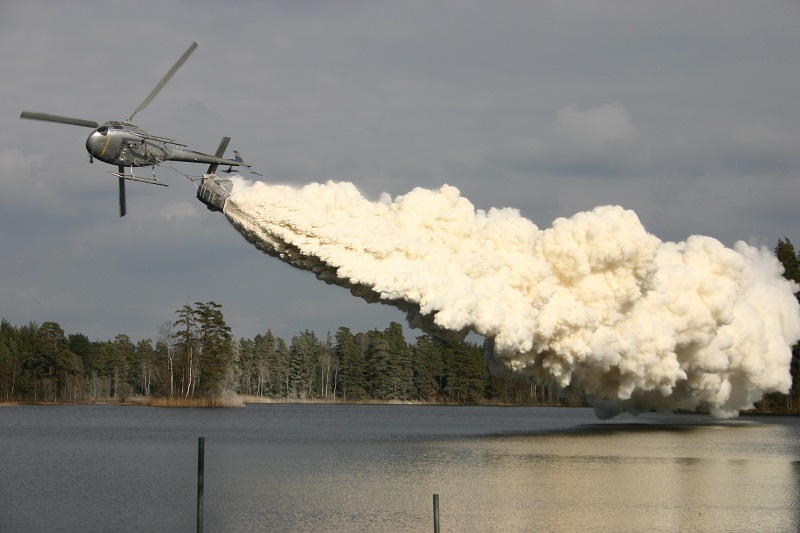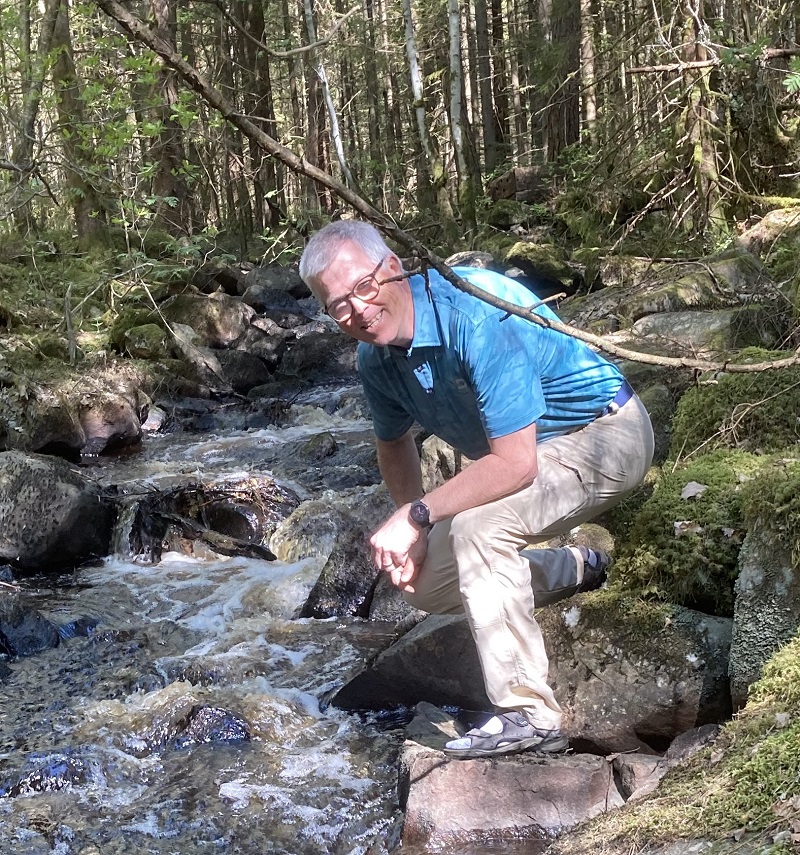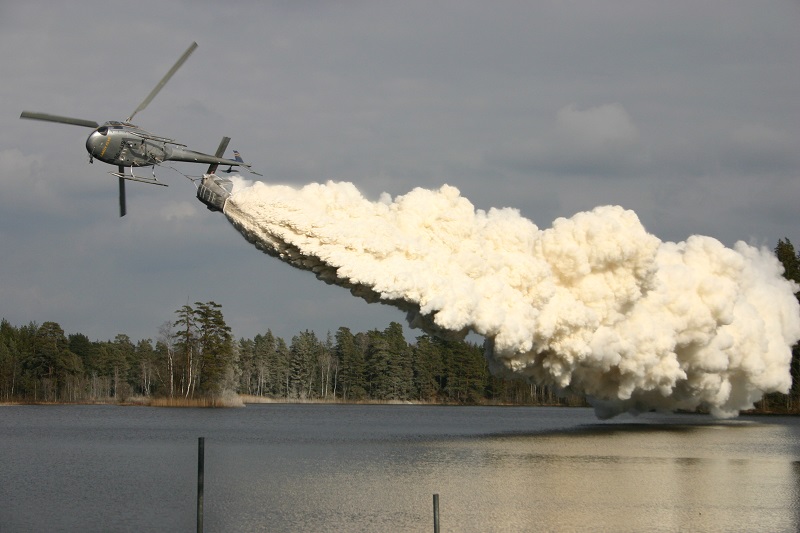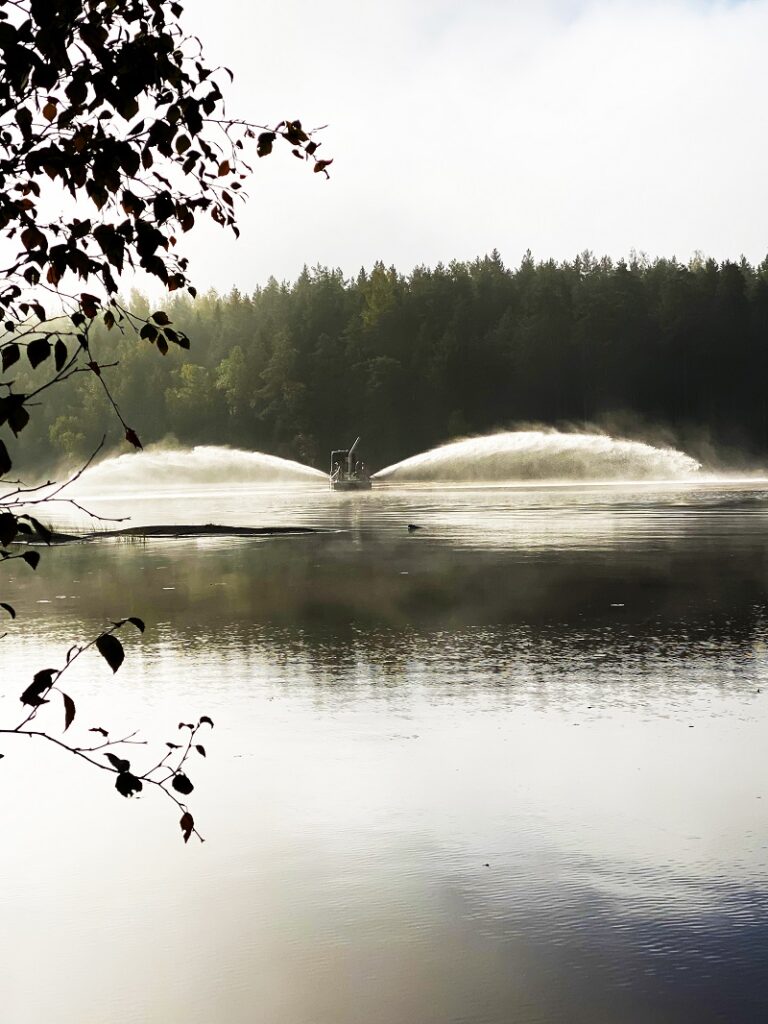
Writer: Björn Holmgren
Liming of acid lakes and watercourses is not just an environmental measure; it is a crucial step toward restoring ecological balance and ensuring the sustainability of our water resources. Liming is essential for combating acidification and protecting critical habitats for aquatic species – a must for a future environment in balance.
One effect of the rise of industrialisation, as everyone knows, is the emission of various pollutants. In the 1970s, it was discovered that fish stocks in lakes and watercourses were declining. After some analysis, it was concluded that it was the decrease of various substances, primarily sulfur and nitrogen oxides, that combined with rain to form what came to be known as acid rain. This was a process that had begun as early as the early 20th century and had thus gradually infiltrated our environment. However, this isn’t simply a national issue. The harmful substances came through the air, primarily from other European countries, largely due to the burning of lignite.
This acidification affected both the soil and water pH levels, which dropped and harmed or killed both fish and plant life in the water. The measures implemented consisted of extensive liming of lakes and watercourses. The effect of the lime was to raise the pH levels to as natural a balance as possible, providing what aquatic life and plants needed to live and survive.
One individual who has been involved for a while and worked with the liming of lakes and watercourses is environmental engineer Gunnar Gustavsson, who is also the liming coordinator at Gislaved municipality in Jönköping County. Gunnar is responsible for the liming and is as active as he is interested in issues concerning our water and its quality. According to Gunnar, the work on pH balance is just as relevant today as it was in the late 1970s.
“Everything is cyclical – people, animals, nature, environment – and in the case of acidification, we are working tirelessly here in Gislaved. Within the municipality’s area of responsibility, there are 130 lakes and 100 watercourses that are limed annually. A municipal liming plan forms the basis for this work, which is adjusted and followed up annually,” says Gunnar, who asserts that it is as clear as it is obvious that liming is essential in many ways. Both now and in the future. “It has a direct positive effect on water chemistry, protects valuable fish stocks, safeguards threatened species both on land and in water, contributes to a living ecosystem, and creates great value for outdoor recreation.”

Gunnar Gustavsson, Environmental Engineer and Liming Coordinator at Gislaved Municipality in Jönköping County. He states that the need to work on pH balance is just as relevant today as it was in the late 1970s. PHOTO: Gunnar Gustavsson
Gunnar emphasizes that the aquatic environment is not just a local concern. “Living lakes create a vibrant countryside, biological diversity, and a balanced environment for the entire country. In many ways, the aquatic environment is critical infrastructure for all living things. It must be protected with both heart and mind,” says Gunnar, who hopes that more funds will be allocated to these environmental conservation efforts.
It is the municipality’s liming plan that dictates the economic needs required to achieve the long-term goal of attaining the right pH balance in the water, explains Gunnar. He clarifies that the responsibility is shared and hierarchical. “We apply for funds from the county administrative board, which in turn receives funds from the Swedish Agency for Marine and Water Management, which in turn gets funds from the responsible ministry. This means that there are many levels required to make this work as effectively as possible,” Gunnar asserts.
The municipality of Gislaved purchases its services and products from Movab, where Göran Lilja is the CEO. The company is an industry leader and has been working with environmental liming since the early 1980s, when the liming of lakes and watercourses began in Sweden. Göran emphasizes that liming is a process that must occur over time at nature’s own pace. Even though the quality of our waters has improved over the years—partly thanks to liming but also because pollution fallout has decreased—the work must continue for another reason: the so-called acidification memory. Göran explains that the situation is threatened from two directions.
“In addition to having to lime directly in lakes and watercourses to continue raising the pH levels, there is also what is called the acidification memory, which means that old fallout remains latent in nature, slowly contributing to further acidification of the water. So, we have both new and old fallout to combat, which means that the work must be carried out over a long period,” explains Göran.

Sometimes there are no roads for us to deliver lime by truck for boat liming. In such cases, helicopter liming is the alternative. PHOTO: Movab AB
Göran explains that Movab has developed over the years in terms of products, accessibility, and service. “We can lime both by boat and helicopter and via dispensers, which are perfect for watercourses and streams. The dispensers are now managed digitally with remote control and monitoring through a web-based program called Movab Magna,” says Göran. He adds that the different liming methods dictate the lime products used, including the size of the lime grains or powder. Nordkalk Optimix is often used in helicopter liming; it’s a mix of crushed limestone and lime granules. Half of the product content is recycled, resulting in an even more environmentally friendly process,” Göran believes.
Solveig Jakobsson at Nordkalk explains that the company has been involved for a long time, contributing knowledge and products for the liming of lakes and watercourses, and that it has improved significantly over the years, but there is still much to be done. “We can look back with both joy and pride on many years of successful liming. It is gratifying to hear from customers who report many visible positive effects that liming has contributed to. But this type of environmental work must proceed according to nature’s terms. It should be done at a pace that nature can handle, which means it cannot go too fast or too slow,” explains Solveig, emphasizing that this important work will therefore continue for quite some time. All for a future environment in balance.

When liming from a boat, both the boat and lime are brought to the designated location. The lime is filled directly into the boat’s cargo hold. The lime is mixed with the lake’s own water and spread as a slurry. This method provides quick results and even distribution. PHOTO: Movab AB
We use cookies to give you the best internet experience. By giving consent, you accept the use of cookies in accordance with our cookie policy.

When you visit any web site, it may store or retrieve information on your browser, mostly in the form of cookies. Control your personal Cookie Services here.